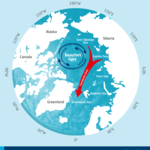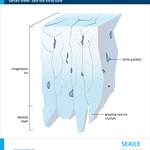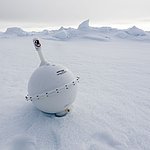Glossary
The English version of our glossary is currently under construction and will be regularly updated.
- A(31)
- B(17)
- C(44)
- D(20)
- E(30)
- F(18)
- G(15)
- H(10)
- I(27)
- J
- K(4)
- L(9)
- M(16)
- N(6)
- O(13)
- P(36)
- Q
- R(14)
- S(45)
- T(23)
- U(5)
- V
- W(3)
- X
- Y(1)
- Z(1)
- 0(2)
Beaufort Gyre
The Beaufort Gyre is an anti-cyclonal, clockwise-spinning ice drift in the Beaufort Sea which transports sea ice from the northern coasts of Greenland, Canada and Alaska to the Central Arctic.
more
Benthos
The community of organisms living on and in the bottom of a body of water (benthic zone).
moreBiocoenosis
The biotic community of all plants and animals in a given habitat.
moreBiodiversity
Biological diversity or biodiversity refers to the variety of species, to genetic peculiarities within species, and to the variety of biotic communities.
moreBioluminescence
Bioluminescence refers to lifeforms that naturally produce light.
moreBiomass
Biomass is the entirety of organic material produced by plants or animals.
moreBiome
A biome is a large but discrete biogeographical unit, together with its characteristic flora and fauna.
moreBiosphere
The entirety of the Earth that is home to lifeforms.
moreBiota
Biota can be understood as the collective term for all lifeforms in a given ecosystem, including bacteria, plants, fungi and animals.
moreBMWK
Federal Ministry for Economic Affairs and Climate Action.
moreBottom-up models
Models that reflect the reality by aggregating the characteristics of certain activities and processes.
moreBrash ice
Collection of small ice fragments with a max. width of 2 m (small floes); the debris of other forms of ice.
moreBreakup
A general term for the formation of cracks in the ice and the subsequent drifting apart of the fragments.
moreBrine channels
Small pockets or channels in the sea ice in which highly concentrated brine accumulates.
more
Bummock
The part of a hummock that extends underwater.
moreBuoys
Autonomous measuring systems.
more
